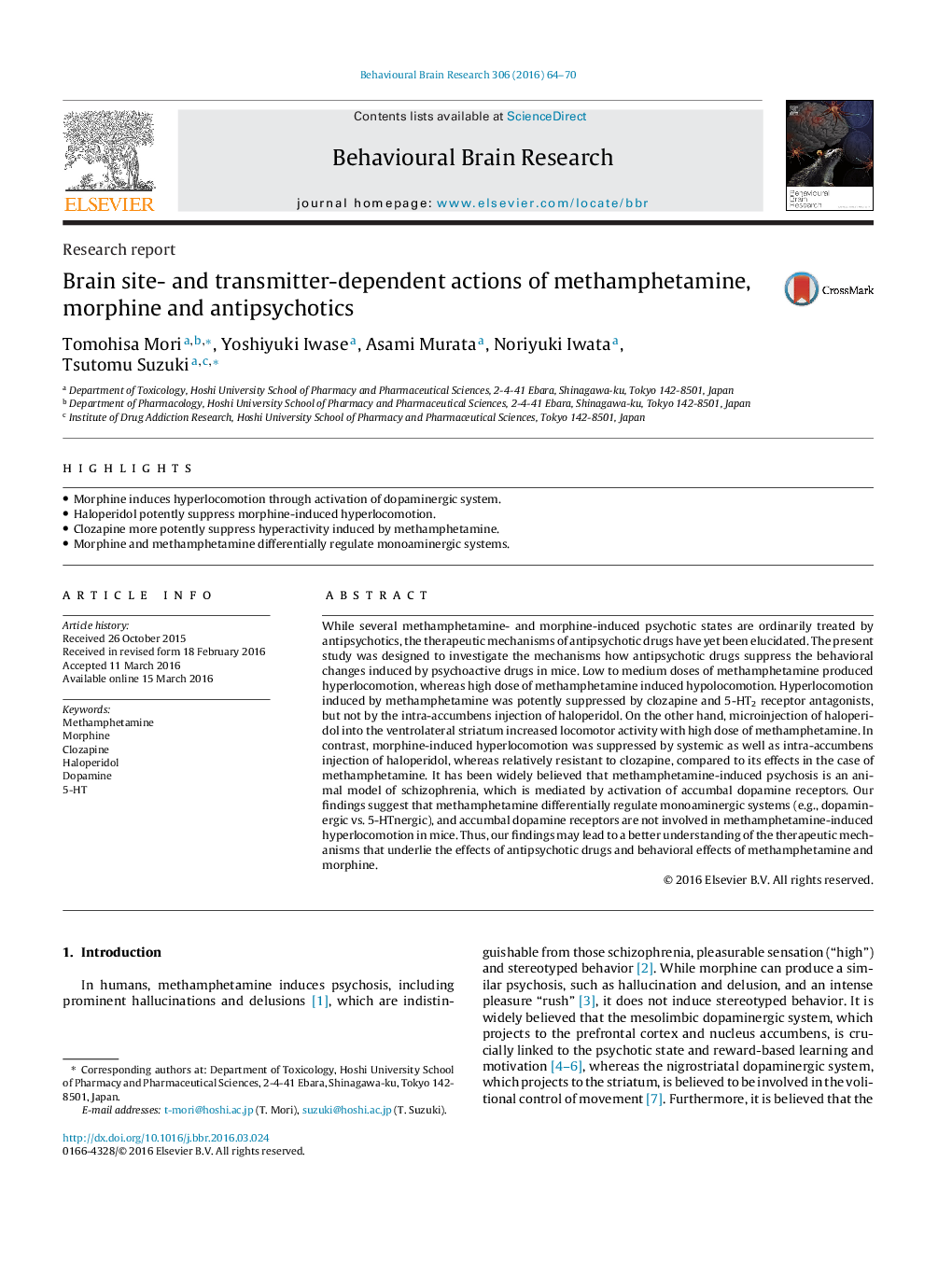| Article ID | Journal | Published Year | Pages | File Type |
|---|---|---|---|---|
| 6256077 | Behavioural Brain Research | 2016 | 7 Pages |
â¢Morphine induces hyperlocomotion through activation of dopaminergic system.â¢Haloperidol potently suppress morphine-induced hyperlocomotion.â¢Clozapine more potently suppress hyperactivity induced by methamphetamine.â¢Morphine and methamphetamine differentially regulate monoaminergic systems.
While several methamphetamine- and morphine-induced psychotic states are ordinarily treated by antipsychotics, the therapeutic mechanisms of antipsychotic drugs have yet been elucidated. The present study was designed to investigate the mechanisms how antipsychotic drugs suppress the behavioral changes induced by psychoactive drugs in mice. Low to medium doses of methamphetamine produced hyperlocomotion, whereas high dose of methamphetamine induced hypolocomotion. Hyperlocomotion induced by methamphetamine was potently suppressed by clozapine and 5-HT2 receptor antagonists, but not by the intra-accumbens injection of haloperidol. On the other hand, microinjection of haloperidol into the ventrolateral striatum increased locomotor activity with high dose of methamphetamine. In contrast, morphine-induced hyperlocomotion was suppressed by systemic as well as intra-accumbens injection of haloperidol, whereas relatively resistant to clozapine, compared to its effects in the case of methamphetamine. It has been widely believed that methamphetamine-induced psychosis is an animal model of schizophrenia, which is mediated by activation of accumbal dopamine receptors. Our findings suggest that methamphetamine differentially regulate monoaminergic systems (e.g., dopaminergic vs. 5-HTnergic), and accumbal dopamine receptors are not involved in methamphetamine-induced hyperlocomotion in mice. Thus, our findings may lead to a better understanding of the therapeutic mechanisms that underlie the effects of antipsychotic drugs and behavioral effects of methamphetamine and morphine.
